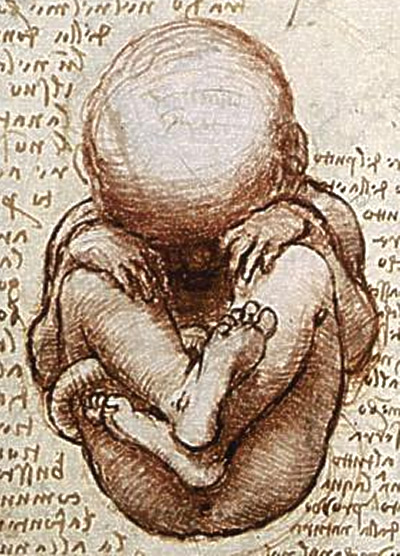Fetal movement

|
WikiDoc Resources for Fetal movement |
|
Articles |
|---|
|
Most recent articles on Fetal movement Most cited articles on Fetal movement |
|
Media |
|
Powerpoint slides on Fetal movement |
|
Evidence Based Medicine |
|
Clinical Trials |
|
Ongoing Trials on Fetal movement at Clinical Trials.gov Trial results on Fetal movement Clinical Trials on Fetal movement at Google
|
|
Guidelines / Policies / Govt |
|
US National Guidelines Clearinghouse on Fetal movement NICE Guidance on Fetal movement
|
|
Books |
|
News |
|
Commentary |
|
Definitions |
|
Patient Resources / Community |
|
Patient resources on Fetal movement Discussion groups on Fetal movement Patient Handouts on Fetal movement Directions to Hospitals Treating Fetal movement Risk calculators and risk factors for Fetal movement
|
|
Healthcare Provider Resources |
|
Causes & Risk Factors for Fetal movement |
|
Continuing Medical Education (CME) |
|
International |
|
|
|
Business |
|
Experimental / Informatics |
Editor-In-Chief: C. Michael Gibson, M.S., M.D. [1]
Overview
Fetal movement refers to motion of a fetus caused by its own muscle activity. Locomotor activity begins during the late embryological stage, and changes in nature throughout development. Muscles begin to move as soon as they are innervated. These first movements are not reflexive, but arise from self-generated nerve impulses originating in the spinal cord. As the nervous system matures, muscles can move in response to stimuli.[1]
Although the heart begins to beat on the 23rd day after conception, this article primarily deals with voluntary and reflex movements. Ages are given as age from fertilization rather than as gestational age.
Movement during development
First trimester
Even before the fetal stage begins, a six-week-old human embryo can arch its back and neck.[2] By seven weeks, movement in the arms and legs can be detected by ultrasound.[2] In these early movements, the limbs move together; they begin to move independently by the ninth week as the controlling neurons in the spinal cord develop.[3] At week 11, the fetus can open its mouth and suck its fingers; at week 12, it begins to swallow amniotic fluid.[4]
Second trimester
By about the twelfth week, the fetus is able to kick and curl its toes, and may grasp its feet or scratch itself with its fingernails.[4] It can also move in response to a touch on its skin.[5] Also starting about week 12, the thoracic diaphragm moves up and down as if the fetus were breathing, but this movement disappears about week 16 and does not resume until the third trimester.[6]
Movements such as kicking continue, and the mother usually feels movement for the first time, an event called quickening, during the fifth month.[7] Around this time, limb movements become more complex, with flexing of the joints and ribs. This activity assists with proper joint development.[5]
By about week 21, the fetus begins to develop a regular schedule of movement.[7] The startle reflex is present in half of all fetuses by week 24 and in all fetuses by week 28.[8] Movement is restricted around this time because the fetus has grown so large it has little space for kicking or changing body position.[9]
Third trimester
In later pregnancy, a complex motion called "stepping" develops. This movement consists of circular "bicycling" motion of legs, which helps the fetus move to a head-down position in preparation for birth.[5]
Variation in activity level
Fetuses aged 14 to 18 weeks show a pronounced circadian rhythm in their activity level, which can be detected both by fetal electrocardiogram and by measuring locomotor activity. Active and quiet periods for the fetus do not correspond to those of the mother; fetuses are most active from 9 a.m. to 2 p.m. and again from 7 p.m. to 4 a.m.[10] During the last four to six weeks before birth, most of the fetuses' kicking and jabbing movements occur while it is sleeping lightly.[11]
Monitoring fetal movement
After quickening, a pregnant women may choose to count the number and types of movements she feels her fetus make. This tally is informally known as a kick count. The American Pregnancy Association states that advantages of conducting kick counts range from giving a pregnant woman an opportunity to bond with her baby to reducing the risk of stillbirth; kick counts are especially recommended in high risk pregnancies.[12]
To make a kick count, a woman finds a comfortable position, such as sitting upright with her back supported or lying on her left side (which maximizes blood flow to the fetus), and times how long it takes to feel at least ten movements such as kicks, flutters, or rolls. Ideally, ten movements should be felt within two hours, although often that number is reached in a much shorter period. The results can be recorded to reveal the pattern of movement. Significant changes in this pattern can notify a woman of a problem with her fetus, allowing her to notify her practitioner early in the case of a problem.[12]
Notes
- ↑ Vaughan 1996, p. 208.
- ↑ 2.0 2.1 Vaughan, p. 207.
- ↑ Vaughan 1996, pp. 208-209.
- ↑ 4.0 4.1 Vaughan 1996, p. 74.
- ↑ 5.0 5.1 5.2 Vaughan 1996, p. 209.
- ↑ Vaughan 1996, pp. 106-107.
- ↑ 7.0 7.1 Vaughan 1996, p. 134.
- ↑ Vaughan 1996, p. 160, p. 189.
- ↑ Vaughan 1996, p. 190.
- ↑ Kintraia et al. 2005.
- ↑ Vaughan 1996, p. 138.
- ↑ 12.0 12.1 American Pregnancy Association, 2007.
References
- "Kick Counts". American Pregnancy Association. July 2007. Retrieved 2007-08-01.
- Kintraia, P.I. (March 2005). "Development of daily rhythmicity in heart rate and locomotor activity in the human fetus". Journal of Circadian Rhythms. 3 (1). Retrieved 2007-08-01. Unknown parameter
|coauthor=ignored (help) - Vaughan, Christopher (1996). How Life Begins: The Science of Life in the Womb. New York: Times Books (Random House). ISBN 0812921038.